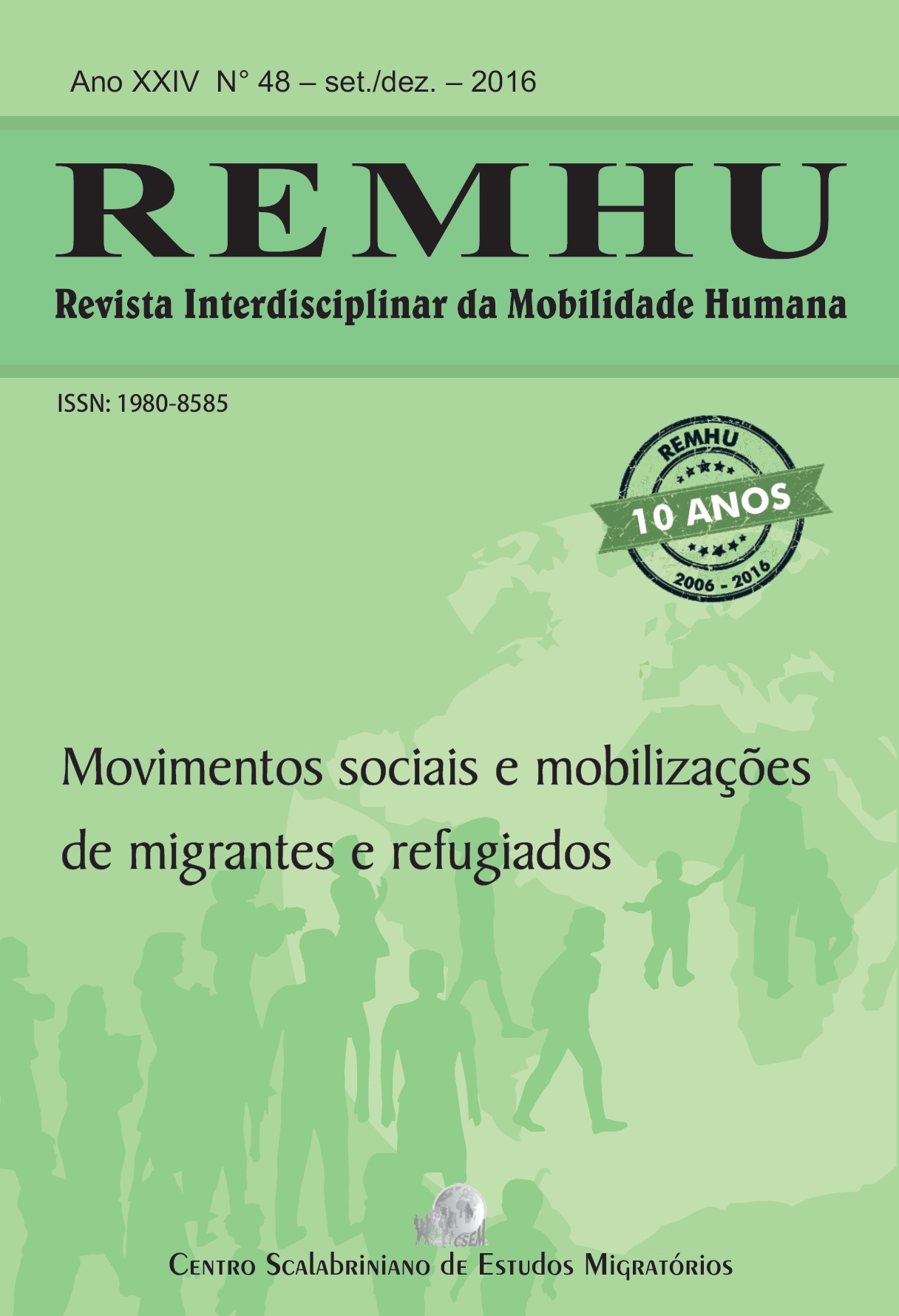Tra sfruttamento e protesta: i migranti e il caporalato agricolo in Italia meridionale
DOI:
https://doi.org/10.1590/1980-85852503880004806Keywords:
Caporalato, Gangmaster system, Southern Italy, Migrant seasonal workers, Mobilization.Abstract
English abstract
This article describes the features and the origin of the gangmaster system (a form of illicit mediation to labour contracting, also called 'caporalato') in Southern Italy, how it has changed when migrant became the main workforce in agriculture, the way it leads to the exploitation of workers, and the reaction of foreign workers against this system.
We provide two examples of how workers dealt with caporalato in Puglia: in the first case, the province of Foggia, migrants were not able to organize to protest against the caporals; in the second case, Nardò, they started a strike that gave this phenomenon national visibility.
Abstract in italiano
Questo articolo descrive le caratteristiche e l'origine del caporalato (una forma di mediazione illecita all'assunzione lavorativa, in inglese “gangmaster system”) nell'Italia meridionale, come è cambiato quando i migranti sono diventati la principale manodopera in agricoltura, il modo in cui porta allo sfruttamento dei lavoratori, e la reazione dei lavoratori stranieri contro questo sistema.
Presentiamo due esempi di come i lavoratori hanno affrontato il caporalato in Puglia: nel primo caso, la provincia di Foggia, i migranti non sono stati in grado di organizzarsi per protestare contro i caporali; nel secondo caso, Nardò, hanno dato il via a uno sciopero che ha dato visibilità nazionale a questo fenomeno.
Keywords:
Caporalato; Gangmaster system; Southern Italy; Migrant seasonal workers; Mobilization.Downloads
Published
Issue
Section
License
Authors retain the copyright and grant the journal the right of first publication, with the work simultaneously licensed under the Licença Creative Commons do tipo atribuição BY that allows the sharing of the work with recognition of authorship and initial publication in this journal.
Authors are permitted to to self-archive their published manuscripts by posting them in personal blogs, institutional repositories and scientific social media, as well as on their personal social media, as long as the full citation of the original publication is included.




